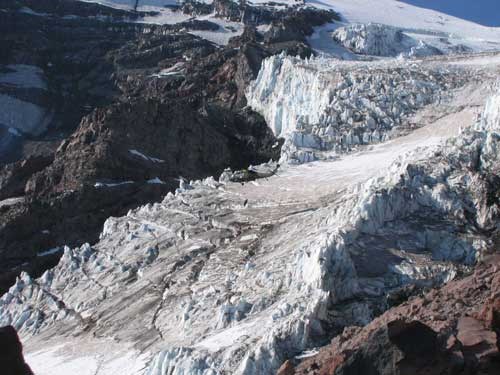
NPS photo If you were to stand at the bottom of Mount Rainier and look up to the summit, you would see tons and tons of ice and snow. Mount Rainier gets an average of 53 feet of snow every winter! It all can’t possibly melt away during the summer. Each year a new layer of snow falls on what is left from the year before. The weight of all these layers of snow pushes down on each other, squeezing out all the air and leaving behind ice. These huge sheets of ice are called glaciers. 
NPS photo Scientists that study glaciers spend their summers collecting data and exploring the glaciers and their crevasses and ice fields. To find out more about Mount Rainier’s largest glaciers click here. There are silly-sounding scientific words for the different parts and features of a glacier. This link will tell you more! |
Last updated: January 27, 2025
